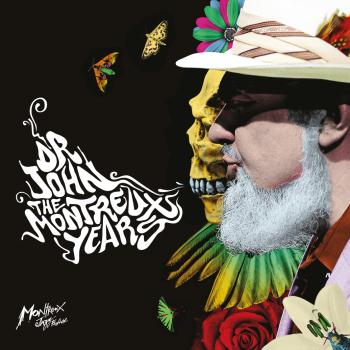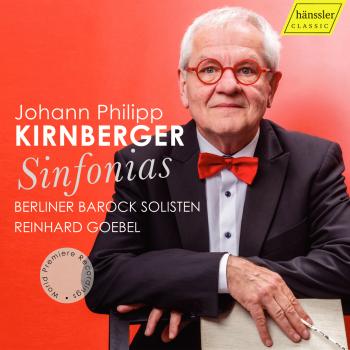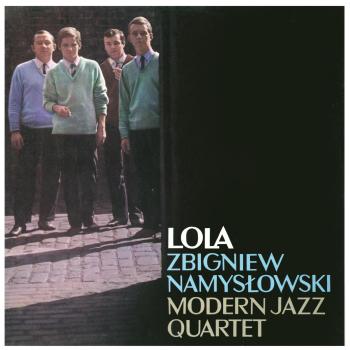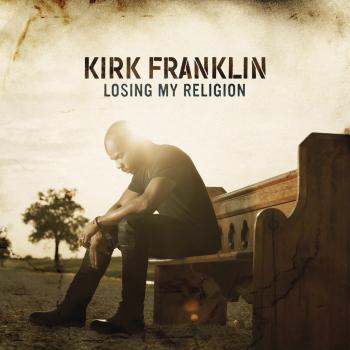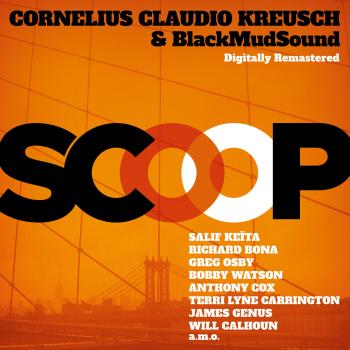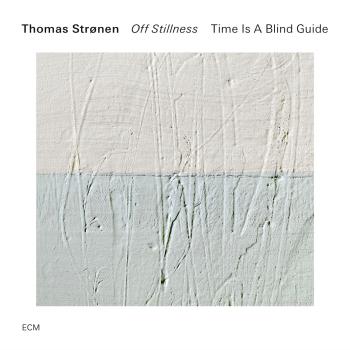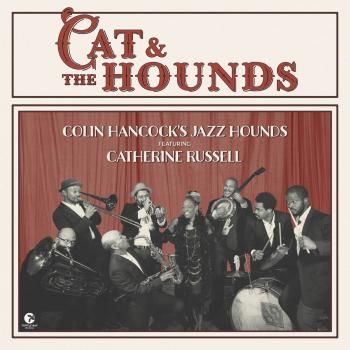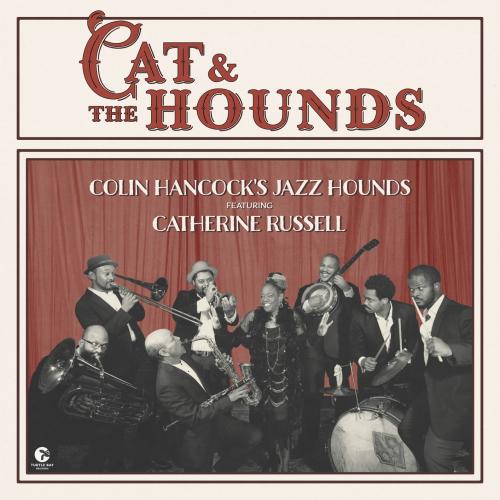
Cat & the Hounds Colin Hancock’s Jazz Hounds & Catherine Russell
Album Info
Album Veröffentlichung:
2025
HRA-Veröffentlichung:
15.08.2025
Das Album enthält Albumcover
- 1 Panama Limited Blues 03:20
- 2 Cake Walkin' Babies (From Home) 02:50
- 3 Telephoning the Blues 02:59
- 4 You've Got Everything a Sweet Mama Needs But Me 03:19
- 5 Gypsy Blues (Intro: Serenade Blues) 02:59
- 6 Elevator Papa, Switchboard Mama 04:29
- 7 West Indies Blues 02:36
- 8 Everybody Mess Around 03:20
- 9 Goin' Crazy With the Blues 02:56
- 10 Crazy Blues 03:13
- 11 Carolina Shout 02:49
- 12 Sweet Man 02:40
Info zu Cat & the Hounds
Afro-Romani cornetist, saxophonist, historian, and producer Colin Hancock’s Jazz Hounds are proud to announce Cat & the Hounds — a bold new album that revives the spirit of early 1920s Black jazz and blues with historical insight and contemporary urgency. Featuring three-time GRAMMY-nominated vocalist Catherine Russell, the band also includes trombonist Dion Tucker, multi-reedist Evan Christopher, multi-instrumentalist and vocalist Jerron Paxton, pianist Jon Thomas, drummer Ahmad Johnson, and tubist Kerry Lewis. Together, they reimagine the sound of a “lost” Creole territory band — one that never recorded, but left a profound cultural imprint.
Rooted in rare 1920s recordings and deep archival research, the Jazz Hounds reinterpret both obscure and canonical material — not as re-enactment, but as restoration. Named in part for Johnny Dunn’s pioneering Jazz Hounds, the group channels each member’s heritage into vivid performances that honor the complex, cosmopolitan roots of Black popular music in the early recording age.
The album’s origins trace back to George Wein’s vision for a “History of Jazz” showcase at the 2020 Newport Jazz Festival, intended to spotlight foundational styles and a new generation of Black traditionalists. Wein enlisted Vince Giordano of Nighthawks fame, who tapped Colin Hancock to lead the project. When the pandemic canceled the festival — and Wein passed soon after — the concept was shelved.
That changed in 2023 at a Brooklyn housewarming party, where Hancock performed with ragtime legend Terry Waldo and was joined on a few tunes by Catherine Russell. Conversations that night with Russell and her husband and manager, Paul Kahn, rekindled the idea — and Cat & the Hounds was born: a living tribute to the music’s roots and resonance.
“Early jazz wasn’t just the work of untrained horn players,” Kahn and Hancock write in their liner notes. “And early blues didn’t come solely from rural guitarists.” Instead, the music was shaped by violinists, conservatory-trained pianists, and artists rooted in classical, Caribbean, and African American traditions — all blending improvisation, syncopation, spirituals, and ragtime into a vibrant, evolving form.
“At the same time,” they add, “the early recording industry reduced this rich musical tapestry to the more marketable term ‘blues.’” It’s a reductive legacy that Cat & the Hounds seeks to correct. Emotionally full-bodied and historically illuminating, the album restores depth to a too-often flattened history.
The journey begins with “Panama Limited Blues,” named for the Illinois Central train connecting New Orleans to Chicago. The tune reflects the path of pianist Luis Russell — Catherine Russell’s father — from Panama to the American South and eventually to King Oliver’s Chicago band. First recorded in 1926 with Luis Russell on piano, it’s reimagined here with Jerron Paxton’s train-whistle harmonica and vivid instrumental interplay inspired by Russell’s early collaborators.
The album continues with “Cake Walkin’ Babies From Home,” inspired by Bessie Smith’s simmering 1925 version recorded with Fletcher Henderson’s Hot Six, followed by “Telephoning the Blues,” a 1929 Luis Russell–Victoria Spivey collaboration, revisited here with a fiery trombone solo by Dion Tucker. Next comes Edna Hicks’ underrecognized 1923 side “You’ve Got Everything a Sweet Mama Needs But Me,” and “Gypsy Blues” from Shuffle Along — the landmark 1921 musical by Noble Sissle and Eubie Blake.
A risqué vaudeville duet, “Elevator Papa, Switchboard Mama” was made famous by Butterbeans and Susie in 1930. Featuring Andy Razaf’s clever double-entendre lyrics and James P. Johnson’s music, the tune finds new life as Russell and Paxton trade comic lines, with Hancock’s cornet evoking the spirit of Johnny Dunn and Louis Metcalf.
“West Indies Blues,” first recorded in 1923 by Armand J. Piron’s Orchestra, reflects the Caribbean influence in early Black dance music. The elder Russell studied piano with Piron’s pianist Steve Lewis, and this version features Evan Christopher’s lyrical obbligato and a bass saxophone cameo by special guest Vince Giordano.
Alberta Hunter’s spirited “Everybody Mess Around,” penned by Perry Bradford, gets a raucous, full-band update, with Russell leading the charge and Kerry Lewis delivering a playful tuba solo — a nod to Hunter’s often-overlooked legacy as a pioneering blues voice.
Mamie Smith’s lesser-known 1926 Victor side “Goin’ Crazy with the Blues” receives high-velocity treatment. Russell’s electrifying vocal ignites the band, with Tucker’s moaning trombone and Hancock’s cornet fueling the drama alongside a searing horn section.
The final stretch brings deep homage and joyful flair. Smith’s genre-defining 1920 hit “Crazy Blues” returns in a darker key, with Russell revisiting the song she first recorded for Boardwalk Empire, buoyed by soaring clarinet and a James P. Johnson–inspired solo from Jon Thomas. Thomas then takes center stage again on Johnson’s stride piano masterpiece “Carolina Shout,” blending solo and ensemble versions with crackling banjo breaks from Paxton.
The album closes with “Sweet Man,” recorded by Ethel Waters in 1925 with Alex Jackson’s band. Hancock channels original cornetist Harry Tate’s muted lines, Russell simmers on the vocal, and Paxton offers a tender six-string banjo tribute to Johnny St. Cyr.
With that, the Jazz Hounds bring this thrilling, edifying journey through Black musical history full circle — proving this music isn’t merely the stuff of dusty archives, but still vividly alive a century later.
Catherine Russell, vocals
Colin Hancock, cornet, C-melody saxophone
Evan Christopher, clarinet, soprano and alto saxophone
Dion Tucker, trombone
Jerron Paxton, banjo, guitar, vocals, harmonica
Kerry Lewis, tuba
Jon Thomas, piano
Ahmad Johnson, drums
Special Guest:
Vince Giordano, bass saxophone (tracks 4, 7)
Catherine Russell
is a native New Yorker, born into musical royalty. Her father, the late Luis Russell, was a legendary pianist / composer / bandleader, and Louis Armstrong's long-time musical director. Her mother, the late Carline Ray, was a pioneering vocalist / guitarist / bassist who performed with International Sweethearts of Rhythm, Mary Lou Williams, and Sy Oliver. Catherine’s professional life began early. After graduating with honors from the American Academy of Dramatic Arts, she toured and recorded with Carrie Smith, Steely Dan, David Bowie, Cyndi Lauper, Paul Simon, Jackson Browne, Michael Feinstein, Levon Helm, Toshi Reagon and Rosanne Cash, among others, appearing on over 200 albums.
Her 2006 debut album Cat, (World Village/Harmonia Mundi), garnered rave reviews, paving the way for her 2008 sophomore release, Sentimental Streak. Catherine was a guest on "Late Night with Conan O'Brien", PBS-TV’s “Tavis Smiley Show”, and NPR's "Fresh Air", “Piano Jazz”, “Mountain Stage”, “World Café”, and “Jazz Night in America.” She has won a prestigious German Record Critics' Award and a Living Blues magazine critics' poll. Catherine Russell's third album, Inside This Heart of Mine, reached #1 on JazzWeek and Roots Music Report radio charts, while also charting on Billboard and reaching #1 on ITunes jazz charts. A fourth album, Strictly Romancin’ was released in February 2012, and was awarded Prix du Jazz Vocal (Vocal Album of The Year) by the French Jazz Academy, Grand Prix du Hot Club de France, and a Bistro Award for Outstanding Recording. Also in 2012, Catherine Russell received a Grammy® Award as a featured artist on the soundtrack album for the HBO-TV series, Boardwalk Empire.
“ ... a voice that wails like a horn and whispers like a snake in the Garden of Eden.” - NPR
In 2013, Catherine contributed 3 songs to the soundtrack of the film, Kill Your Darlings. Her 5th solo album, Bring It Back, was released worldwide in February of 2014 on the Jazz Village label, receiving a ★★★★★ 5 Star Review in Downbeat Magazine. In September 2016, Catherine Russell released her 6th solo album, titled Harlem On My Mind, featuring songs from the Great African American Songbook, receiving a Grammy® Nomination for Best Jazz Vocal Album. Her 7th album as a leader, Alone Together, was released in March 2019 on Dot Time Records, held the #1 position on the JazzWeek 2019 Year End chart for national airplay and received her second Grammy® Nomination for Best Jazz Vocal Album. Also in 2019, Catherine appeared in the feature film Bolden, and contributed vocals to the soundtrack album by Wynton Marsalis. She appears as featured vocalist on three tracks on Big Band Holidays II, accompanied by Jazz at Lincoln Center Orchestra with Wynton Marsalis.
In 2022, Catherine Russell released Send For Me, her 8th album as a leader, receiving rave reviews in national media outlets; The Wall Street Journal, Relix, No Depression, JazzTimes, WBGO, Pop Matters, and others, while also performing a concert for NPR Tiny Desk (Home).
With universal acclaim, Catherine Russell has performed on four continents. She's been a hit at major Jazz Festivals including Monterey, Newport, North Sea, JazzAscona, Montreal, Bern, Rochester International, Panama, Tanglewood, and at sold out venues like The Kennedy Center in Washington, D.C., Scullers in Boston, The Dakota in Minneapolis, Jazz at Lincoln Center and Carnegie Hall in NYC, SFJazz in San Francisco, and Pasadena Pops in Los Angeles. All Music Guide says, "Russell emerged as a retro old school vocalist for the ages."
Her repertoire features a selection of gems from the 1920s through the Present; vital interpretations, bursting with soul and humor. With an off-the-beaten-path song selection, sparkling acoustic swing, and a stunning vocal approach, Catherine Russell has joined the ranks of the greatest interpreters and performers of American Popular Song.
Colin Hancock
At just 21 Colin Hancock is making serious waves in the early jazz community. Hancock, now in his junior year at Cornell University, discovered the music of Bix Beiderbecke and the magic of hand-cranked phonographs at an early age. His fascination with old jazz records and the machines on which they were played was no passing childhood fad; his musical and mechanical interests, encouraged by his parents and teachers, persisted and intensified.
He received formal lessons on string bass and trumpet from Dan Torosion, John Moon, and Martin Norgaard, some true veterans of the Austin music scene, but went on to teach himself all the other major band instruments “through hours and hours of trying to get the right note and trying to do what was on these recordings that I really liked.” Some of these instruments came easily; others, like the clarinet, were more difficult to master. “It took a very long time,” he says, “to be able to sit in with ensembles and get gigs as a clarinetist.” From strings to reeds to rhythm instruments, he has become a true multi-instrumentalist.
Hancock’s determination to master a band’s worth of instruments says a lot about his ability to solve problems most would write off as insurmountable. It was, he says, “out of necessity…I wanted to hear what it would sound like if these ideas I had were played by a group.” He told himself, “no one in my age group can do this so I’ll do this and be able to put these ideas on a recording.” He started making multi-track recordings of himself playing each part on early jazz tunes while he was in the fifth grade.
His parents, in addition to supplying musical instruments, found him antique acoustic recording equipment. By his early teens, he had acquired everything he needed to make original acoustic recordings on wax cylinders. He found a “shaver,” used to scrape a cylinder clean for a second take, being sold as an antique sewing machine.
During his freshman year Hancock was hauling his equipment around town to make cylinder recordings of his friends and of the high school band. His experience multi-tracking allowed him to create cylinders of himself playing each part of jazz recordings. Some of these may be heard on YouTube at SemperPhonographCo, where, along with the many non-cylinder multi-tracks he has created, one may find other notable jazz-related projects. These have only gotten better as he has traveled and recorded with other fine musicians around the country. ...
Dieses Album enthält kein Booklet

